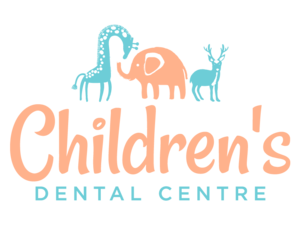One Simple Step To Improve Your Restorative Success in Primary Teeth
In Australia, 55% of 6 year-olds have decay in their primary teeth, with 48% of 12-year olds having decay in their permanent teeth.(1)
Severe early childhood caries in a 3-year old
Sadly this means that it is all too common that we have to place restorations in primary teeth. Also, based on that information, we need restorations in primary teeth to survive for around 6 – 10 years. About what we would expect as a bare minimum in the adult dentition. So let’s, aim to restore primary teeth to last.
Ideally, we want our restoration to still be present and functional at the time of exfoliation of the primary tooth. This post will address just one factor that will greatly improve your success rates for restorative dentistry in children. In future posts, we will cover the different types of materials recommended in different clinical situations.
The range of restorative materials for primary teeth varies substantially and surprisingly much more than permanent teeth.(2) There is a substantial body of evidence available regarding the success of different restorative materials in primary teeth. What is clear from this evidence is that selecting the correct material AND ensuring that the material is not contaminated by moisture is crucial to improve the success of your restorations. This applies even to those materials viewed as ‘moisture tolerant’.(3)
In a recent systematic review that analysed 31 suitable papers, it was found that restorations placed WITH A RUBBER DAM has a success rate after 4 years of 93.6% (6.4% failure). When a restoration was placed WITHOUT A RUBBER DAM the failure rate increased to 22.5%, which is a 350% increase in the failure rate.(3) So this one simple step, that you are probably already using on adult patients, will greatly improve the success of your restorations in children!
What other benefits are there in using rubber dam on children?
Children don’t taste bitter or sour materials
Children don’t ‘drown’ in water
Helps prevent aspiration (wedges, crowns…)
You won’t be fighting an inquisitive tongue
Helps protect against injuries to the soft tissues
If you are using nitrous oxide, it promotes children breathing through their noses, which means better sedation
The main resistance you may have to using a rubber dam is that you may be concerned about kids accepting its placement. However, we assure you that with some behaviour management, kids can tolerate it very well. Actually, most kids tend to tolerate longer restorative procedures under the rubber dam. Once you have had some success with it a couple of times, we believe that you will find that the rubber dam will revolutionise your ability to provide high quality restorative care to children.
Once explained, most children are very accepting of the rubber dam.
We have created a short video for some behaviour management tips to help you use the rubber dam in kids; please see below. Clamps we commonly use include; 12A and 13A on fully erupted permanent molars and Es. (W)8A or (W)14A for partially erupted 6s and 27N also work really well on primary Ds and Es
Good luck and if we can be of any assistance, please feel free to send us an email.
All the best
Sarah and Tim
References
1. AIHW. Oral Health and Dental Care in Australia. 2019. Canberra, Australia: AIHW. URL: 'https://www.aihw.gov.au/reports/dental-oral-health/oral-health-and-dental-care-in-australia/contents/healthy-teeth'. 2019.
2. Keys T, Domejean S, Burrow M, et al. Carious lesion management in children and adolescents by Australian dentists. Australian Dental Journal 2019;64:282-292.
3. Chisini LA, Collares K, Cademartori MG, et al. Restorations in primary teeth: a systematic review on survival and reasons for failures. Int J Paediatr Dent 2018;28:123-139.



